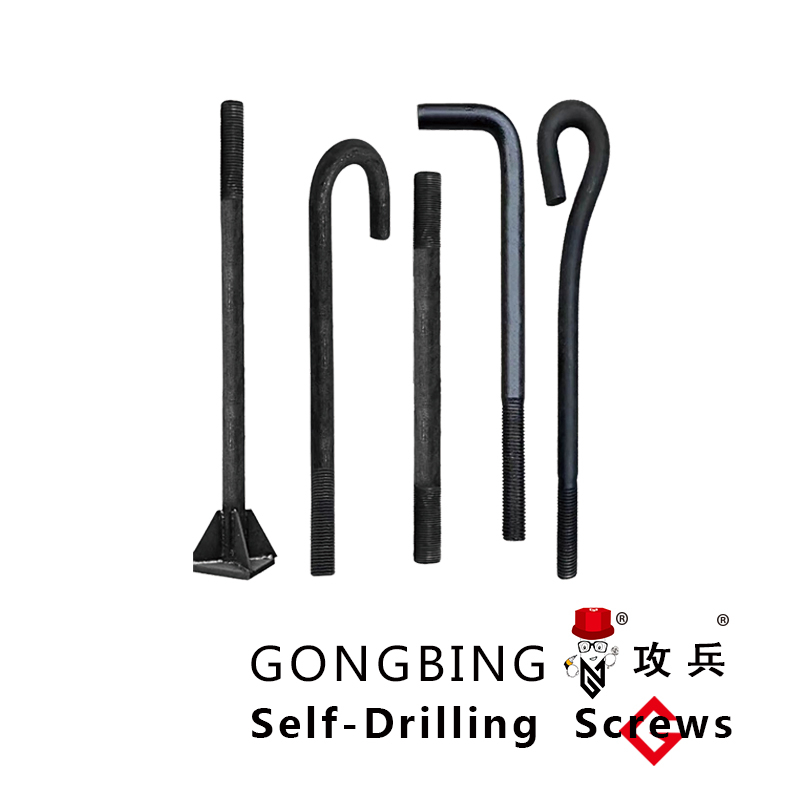m12 double ended stud
Understanding the M12 Double Ended Stud A Comprehensive Overview
In the realm of mechanical engineering and construction, fastening components play a crucial role in ensuring the integrity and reliability of structures and machines. One such essential fastening component is the M12 double ended stud. This article delves into the characteristics, applications, and benefits of the M12 double ended stud, offering a detailed understanding for both professionals and enthusiasts in the field.
What is an M12 Double Ended Stud?
An M12 double ended stud is a threaded rod with threads running along both ends, allowing it to be securely fastened into two separate components simultaneously. The M12 designation indicates that the diameter of the stud is 12 millimeters, conforming to the metric standard for bolts and screws. Double ended studs are typically made from high-strength materials such as stainless steel, carbon steel, or alloy steel, depending on their intended application and required mechanical properties.
Design and Dimensions
The design of an M12 double ended stud includes two sections of external threads, often with a smooth or unthreaded portion in the middle. The length of the stud can vary, enabling it to accommodate different spacing requirements between components. Common lengths for M12 double ended studs might range from 50mm to 200mm, but custom lengths can be fabricated to meet specific project needs.
The threads on the M12 stud are typically designed to conform to the ISO metric thread standards, ensuring compatibility with a wide array of nuts and other threaded fasteners. The standard pitch for an M12 thread is 1.75 mm, which is the distance between adjacent threads; this is crucial for ensuring proper engagement with the corresponding nuts.
Applications of M12 Double Ended Studs
M12 double ended studs find extensive use in various industries, including construction, automotive, aerospace, and machinery manufacturing
. Their versatility allows them to be employed in a broad range of applications1. Structural Connections In construction, M12 double ended studs are often used to connect beams, columns, and other structural elements, providing stability and strength to the overall structure. 2. Machinery Assembly In mechanical assemblies, double ended studs can be utilized to secure parts together, ensuring that they remain tightly held even under dynamic loads and vibrations.
m12 double ended stud

3. Automotive In the automotive sector, M12 studs are commonly used to attach components such as engine mounts or to secure transmission parts, playing a vital role in vehicle assembly.
4. Aerospace Given the rigorous safety and performance standards, M12 double ended studs are often used in aerospace applications to ensure the reliability of critical components under extreme conditions.
Benefits of Using M12 Double Ended Studs
1. Strength and Durability Made from high-quality materials, M12 double ended studs can withstand significant tensile and shear forces, making them ideal for high-stress applications. Their robust design ensures longevity, reducing the need for frequent replacements.
2. Ease of Installation The dual threading design simplifies the installation process, allowing for quicker assembly and disassembly of components compared to traditional bolted connections. This capacity is especially beneficial in maintenance and repair applications.
3. Versatility M12 double ended studs are compatible with a wide range of nuts and washers, providing flexibility in design and application. This versatility makes them an optimal choice for many different environments and requirements.
4. Cost-Effective By minimizing the need for various individual fasteners, double ended studs reduce material costs and simplify inventory management for manufacturers and contractors.
Conclusion
In summary, the M12 double ended stud is an indispensable fastener in modern engineering and construction. Its unique design, robust material properties, and versatility make it suitable for a diverse range of applications across multiple industries. Understanding its characteristics and benefits can empower engineers, designers, and construction professionals to make informed decisions when selecting fastening systems for their projects. Whether securing components in a high-stress environment or assembling structural elements in a building, the M12 double ended stud stands out as a reliable and efficient solution in the fastening landscape.
-
Weatherproof Plastic Expansion Anchors for OutdoorNewsJun.06,2025
-
Sustainability in the Supply Chain: Eco-Friendly TEK Screws ProductionNewsJun.06,2025
-
Load-Bearing Capacity of External Insulation FixingsNewsJun.06,2025
-
Double Head Bolts: Enhancing Efficiency in Industrial MachineryNewsJun.06,2025
-
Corrosion Resistance in Chipboard Screws: Coatings for Wholesale DurabilityNewsJun.06,2025
-
Butterfly Toggle Bolts : Enhancing Structural ResilienceNewsJun.06,2025
